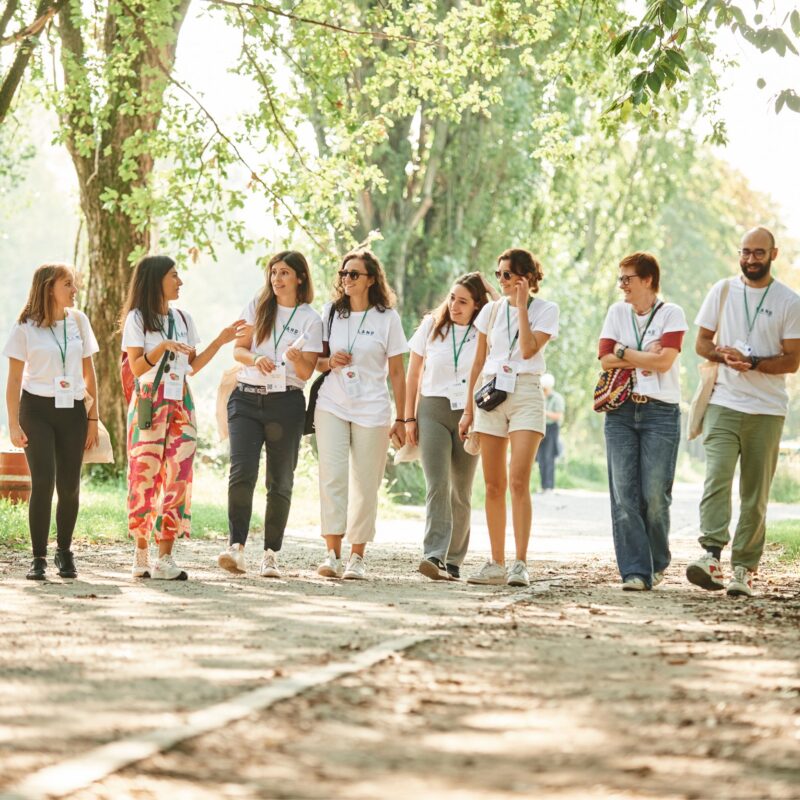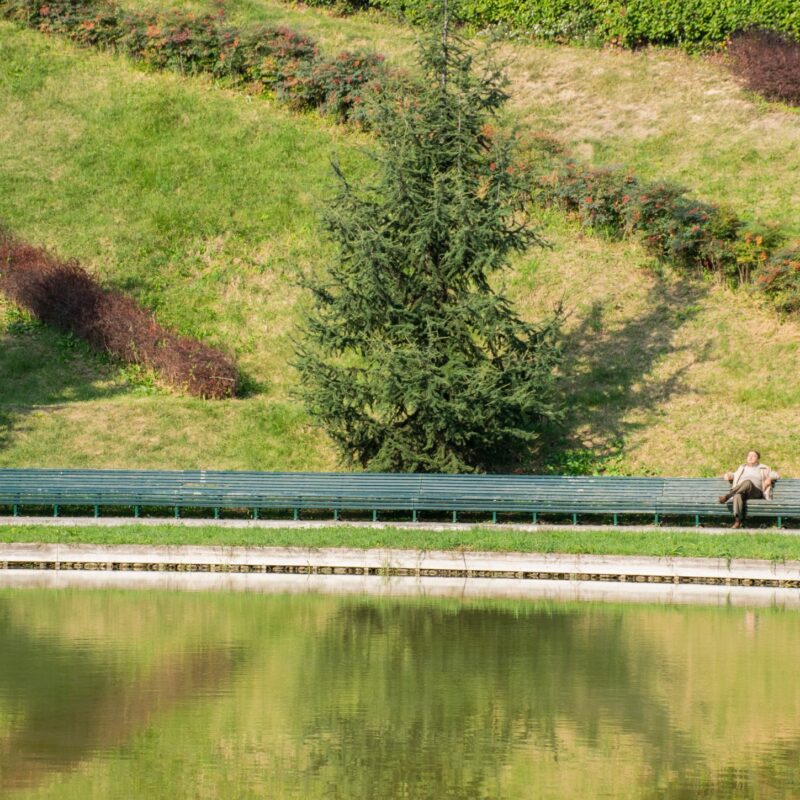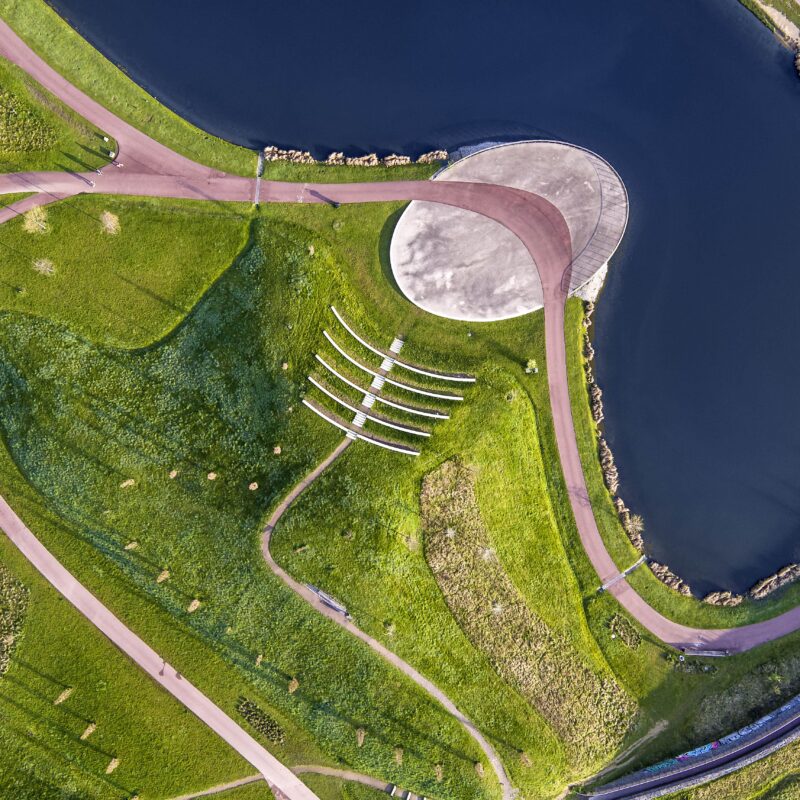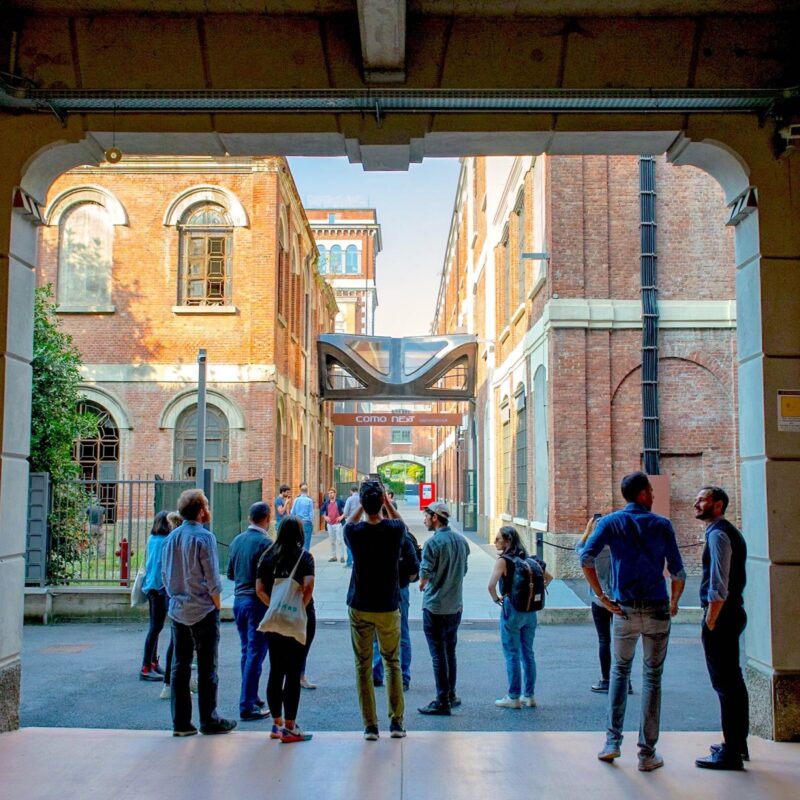Climate Adaptation & Mitigation
The climate emergency is a key challenge for our contemporary landscapes.Mitigation and adaptation measures are crucial to ensure the efficient functioning ofecosystems and human well-being. Nature-positive landscapes are our response tothe hazards and uncertainties of a changing climate.
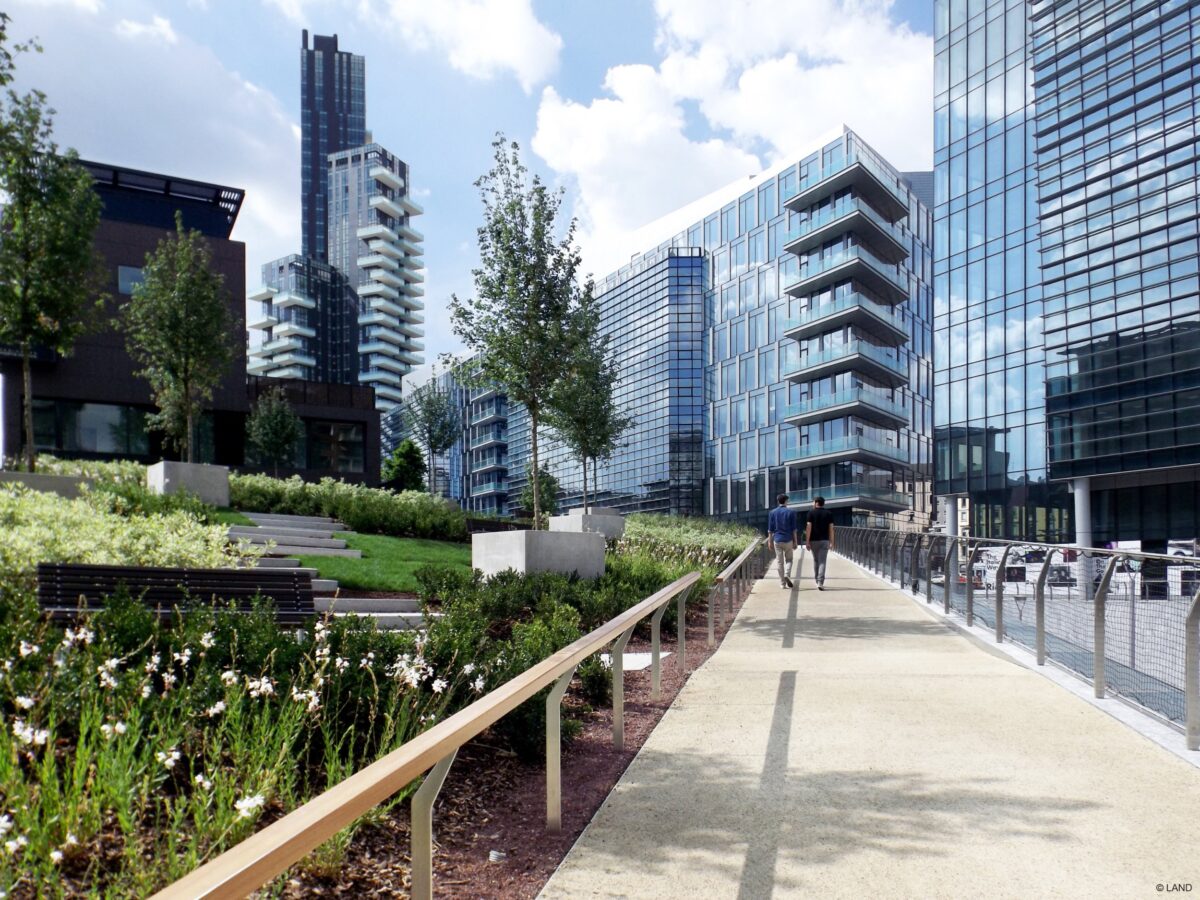
Widely disseminated green areas help mitigate negative climate effects and make our cities safer
Nature is a powerful ally in tackling the negative effects of global warming andextreme weather events.
Depaving, for example, is an effective way to reduce theurban heat island effect, promote natural urban drainage, and bring green areas evencloser to our homes.
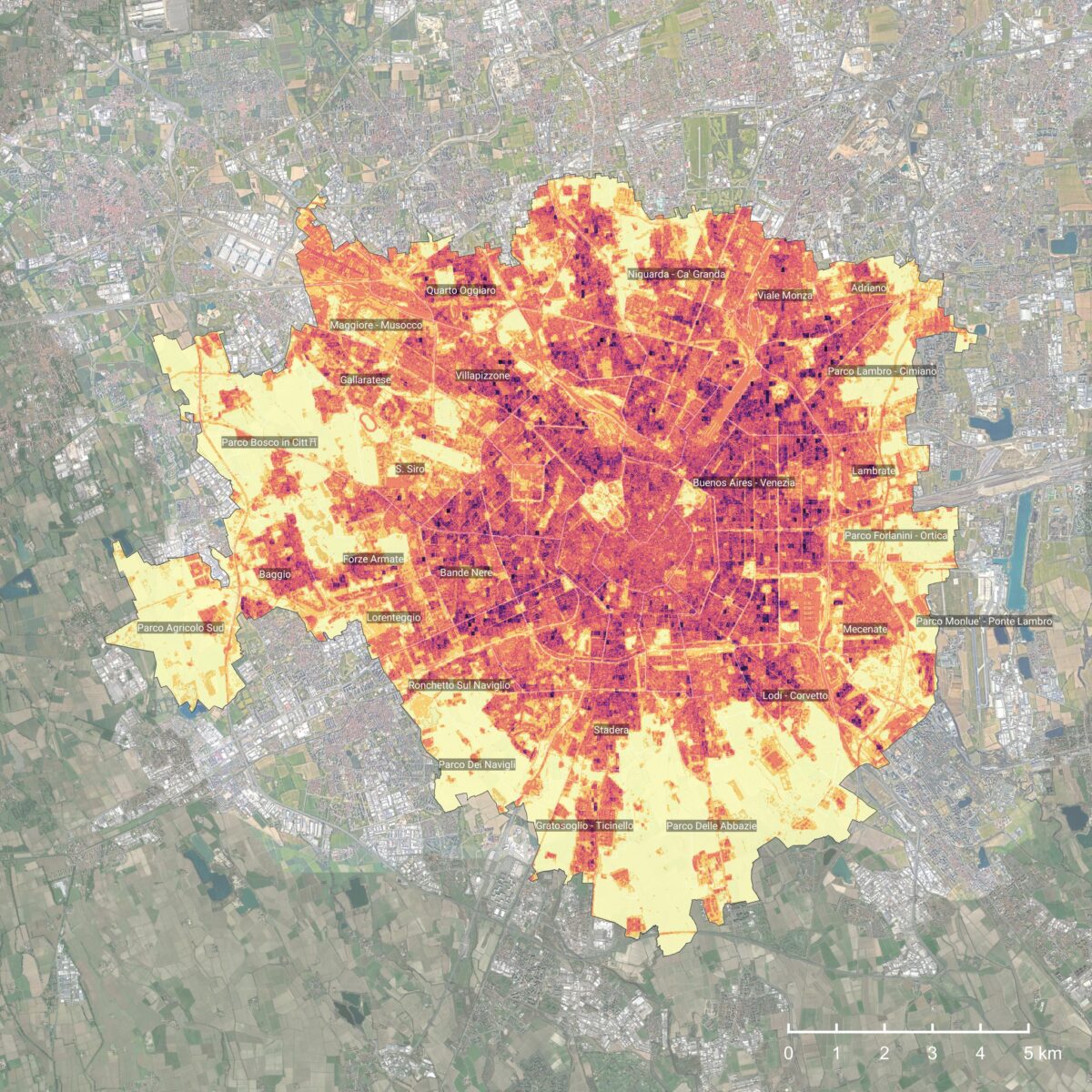
Milan case study from the UrbAlytics project: Heat wave potential risk index at urban scale
UrbAlytics, a LAND Research Lab and Latitudo 40 project funded by the Horizon 2020program, aims to combine artificial intelligence with satellite observation of Earth to provide information that can support urban planners and decision-makers in mitigating and adapting to the urban heat island effect.
Soil recovery and afforestation: Cities face increasingly frequent disruptions and damage due to extreme weather events such as heavy rains, droughts, and heat waves. These events endanger people’s health and safety and are a recurring budget item for private owners, public administrations, and insurance companies. Soil recovery and afforestation are the heart of our renaturalization strategy.
River renaturalization and improvement of waterfronts: Rivers have acted as crucial infrastructural and landscape landmarks in our cities for centuries. Over the years, most of them have been covered, sealed, and contaminated with various pollutants, causing environmental harm and damaging the quality of life. The renaturalization of rivers and improvement of waterfronts makes our cities more livable.
Urban renaturation: Urban greening is a key aspect of sustainable city planning and enables us to mitigate negative climate effects. Under the 3-30-300 rule, three trees must be planted for every home, which results in a 30 percent tree canopy cover in every neighborhood, while the rule’s provision that the closest public park must be no more than 300 meters away not only improves well-being, but also makes our cities safer.
Sustainability Consulting
We guide both private and public clients through the dynamics of environmental, social, and economic factors, with a focus on enhancing the well-being of both urban and rural spaces, to benefit people and the planet.
Strategic Planning
We collaborate with municipalities, public administrations, and companies with the goal of creating lively and sustainable cities. From spatial strategies to environment- and landscape-oriented masterplans to urban planning practice, we support clients in developing their visions of a sustainable future.
Landscape Design & Construction
We design attractive and inclusive places through collaboration and innovation, strengthening the connection between people and nature to strive for sustainable development. We are not just creators; we are stewards of nature, committed to nurturing and conserving our environment for generations to come.
Applied Research
Together with municipalities, businesses, and academic partners we drive applied research initiatives and offer science-based consulting and capacity building at the intersection of sustainability and digitalization.
